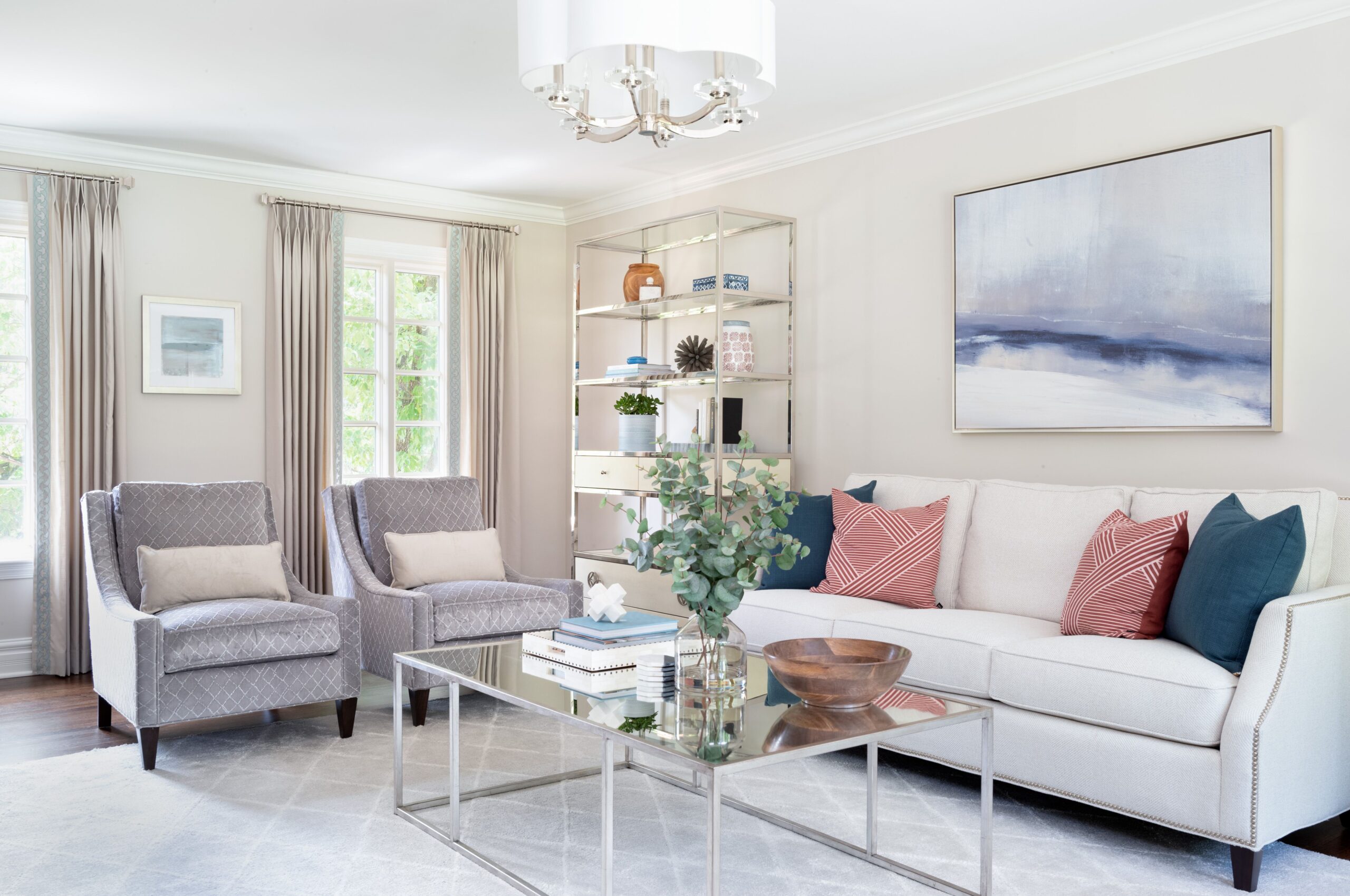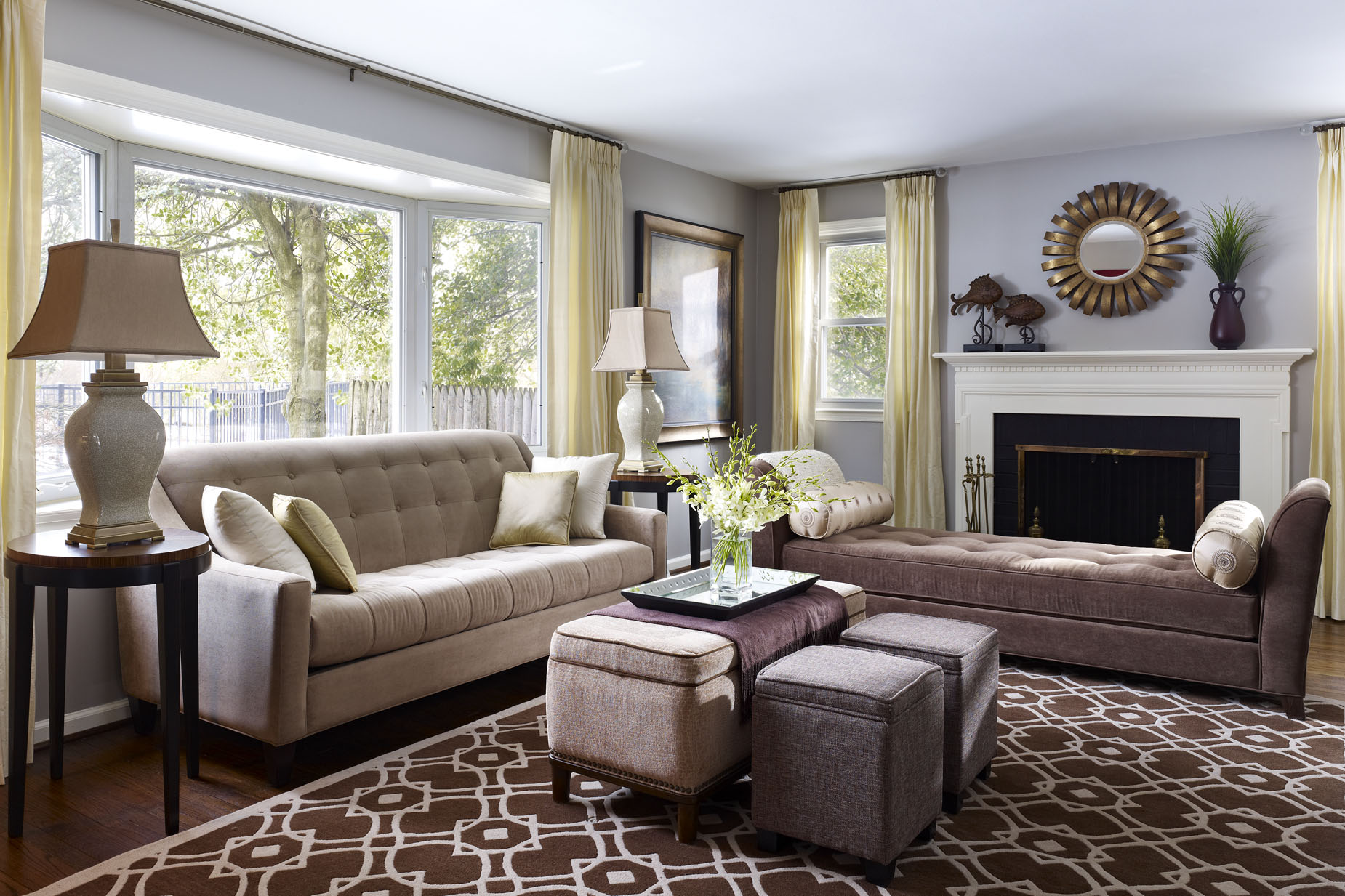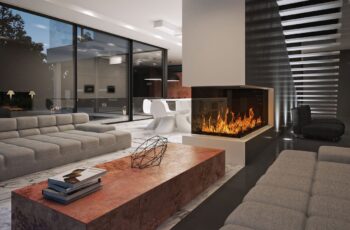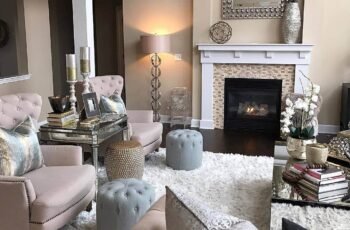
The Art of Elegant Equilibrium: Crafting a Timeless Transitional Design Living Room
The living room, often dubbed the heart of the home, is where life unfolds – from quiet evenings with a book to lively gatherings with loved ones. It’s a space that demands both comfort and aesthetic appeal, a delicate balance that many homeowners strive to achieve. In the ever-evolving world of interior design, one style has consistently risen to prominence for its ability to deliver precisely this equilibrium: Transitional Design.
Far from being a fleeting trend, transitional design has cemented its place as a timeless approach, offering a sophisticated bridge between traditional elegance and contemporary clean lines. For the living room, this means creating an environment that feels both classic and current, inviting and refined, without succumbing to the extremes of either overly ornate or starkly minimalist aesthetics. It’s about blending, harmonizing, and curating a space that speaks to enduring style rather than passing fads.
This comprehensive guide will delve deep into the essence of transitional design for the living room, exploring its defining characteristics, the key elements that bring it to life, and practical strategies for transforming your own space into a haven of elegant equilibrium.
What is Transitional Design, and Why Does It Reign Supreme?

At its core, transitional design is the masterful fusion of traditional and contemporary elements. It’s not about choosing one over the other, but rather about selectively incorporating the best aspects of both to create a cohesive, balanced, and sophisticated whole.
From Traditional, it borrows:
- A sense of warmth and comfort.
- Classic proportions and silhouettes in furniture.
- Rich textures and natural materials.
- An emphasis on quality and craftsmanship.
- A feeling of established elegance.

From Contemporary, it adopts:
:strip_icc()/MID_7009694_Shot_7_32acopy_preview-f457296fc00b450f9606c6d4897fcd5e.jpg)
- Clean lines and uncluttered spaces.
- Simpler forms and less ornamentation.
- Neutral color palettes, often with pops of accent colors.
- A focus on functionality and livability.
- An airy, open feel.

The popularity of transitional design lies in its inherent versatility and adaptability. It appeals to a broad spectrum of tastes, making it an ideal choice for couples with differing aesthetic preferences, or for those who desire a home that can evolve gracefully over time without requiring a complete overhaul. It sidesteps the risk of feeling dated quickly, offering a timeless backdrop that can be refreshed with minimal effort through accessories and art. Moreover, it prioritizes comfort and livability, ensuring that a beautifully designed space is also a truly welcoming and functional one.
The Pillars of a Transitional Living Room
Achieving the perfect transitional living room involves a thoughtful consideration of several key design elements. Each plays a crucial role in crafting the signature balanced aesthetic.

1. The Serene Canvas: Color Palette
The foundation of any successful transitional living room is its color palette. Unlike the bold, saturated hues often found in purely traditional settings or the stark monochromatic schemes of some contemporary spaces, transitional design embraces a soothing symphony of muted tones.
- Neutrals are King: Think dove grey, warm beige, creamy off-whites, gentle taupes, and subtle charcoals. These colors provide a calm, sophisticated backdrop that allows the varied textures and forms of the furniture and accessories to truly shine. They create a sense of spaciousness and serenity.
- Tonal Variation: While neutrals dominate, avoid a flat, one-dimensional look. Introduce depth by layering different shades within the same neutral family. For example, a light grey wall might be paired with a darker grey sofa and a textured charcoal rug.
- Strategic Accents: A transitional living room isn’t devoid of color; it simply uses it judiciously. Introduce pops of color through throw pillows, a piece of art, a vase, or a unique accent chair. These accents are typically drawn from nature (deep blues, sage greens, earthy browns) or subdued jewel tones, offering a sophisticated contrast without overwhelming the space.

2. The Art of Balance: Furniture Selection
Furniture is where the "transitional" magic truly happens. It’s about mixing and matching pieces that individually might lean towards one style, but collectively create a harmonious blend.
- Silhouettes: Look for furniture with clean lines but soft edges. A sofa might have a classic rolled arm but a streamlined base, or a contemporary track arm with plush, inviting cushions. Avoid overly ornate carvings or excessively minimalist, stark forms. The goal is approachable elegance.
- Scale and Proportion: This is critical. Transitional furniture tends to be substantial and comfortable, but not overly bulky. Ensure pieces are proportionate to the room size, allowing for comfortable circulation and an open feel. A large, inviting sectional can be balanced by lighter, airier accent chairs.
- Upholstery: Opt for natural, durable fabrics that invite touch. Linen, cotton, wool, and performance velvets are excellent choices. Textural weaves add visual interest without needing busy patterns. Solids and subtle tone-on-tone patterns are preferred over loud prints, reinforcing the serene backdrop.
- Mixing Styles: This is the cornerstone. Pair a traditional chesterfield sofa with sleek, modern side tables. An antique wooden chest can serve as a coffee table, complemented by contemporary lamps. The juxtaposition creates visual interest and depth.
3. A Symphony for the Senses: Materials and Textures
Transitional design excels at layering materials and textures to create a rich, inviting, and visually dynamic space.
- Wood: Warm, natural wood tones (from light oak to medium walnut) are essential. They bring an organic warmth and grounding element. Think coffee tables, side tables, console tables, or accent chairs with exposed wood frames.
- Metals: Introduce metallic accents for a touch of contemporary gleam and sophistication. Brushed nickel, antique brass, matte black, or even polished chrome can be used for lighting fixtures, table bases, or decorative objects. Mixing different metal finishes subtly adds another layer of interest.
- Glass and Stone: Elements like glass tabletops, marble or quartz accents on a console, or a stone fireplace surround contribute a sense of lightness and understated luxury, bridging the gap between traditional solidity and contemporary transparency.
- Textile Layering: This is where comfort and visual richness come alive. Layer a soft, natural fiber rug (wool, jute, sisal) underfoot. Drape throws of varying textures (chunky knit, faux fur, cashmere) over sofas and chairs. Introduce decorative pillows in different fabrics (linen, velvet, silk, boucle) with subtle patterns or varying textures. This creates depth and a cozy, inviting atmosphere.
4. Illumination with Intent: Lighting
Lighting in a transitional living room is about creating ambiance, functionality, and visual appeal through a layered approach.
- Ambient Lighting: Recessed lighting or a central ceiling fixture provides overall illumination.
- Task Lighting: Floor lamps and table lamps are crucial for reading or other activities. Their bases often combine classic shapes with modern finishes, or vice versa.
- Accent Lighting: Picture lights, up-lights for plants, or lighting within display cabinets highlight specific features or create focal points.
- Dimmers are a Must: The ability to adjust light levels is key to setting different moods, from bright and airy during the day to warm and intimate in the evening.
- Fixture Styles: Look for fixtures that marry traditional forms (e.g., a classic chandelier silhouette) with contemporary materials (e.g., clear glass, brushed metal). Or, choose simple, clean-lined contemporary fixtures that don’t detract from the overall balance.
5. The Personal Touch: Accessories and Art
Transitional living rooms are curated, not cluttered. Accessories are chosen for their intrinsic beauty, personal meaning, or textural contribution, rather than simply filling a space.
- Less is More: Resist the urge to over-decorate. Each piece should feel intentional and contribute to the overall aesthetic.
- Meaningful Objects: Incorporate personal collections, travel souvenirs, or family heirlooms that tell a story. This adds character and warmth.
- Art: Art is an excellent way to introduce color, personality, and a contemporary edge. Mix abstract pieces with landscapes or portraits. Large-scale art can serve as a powerful focal point. The frame can also bridge the gap – a traditional subject in a sleek, modern frame, or vice-versa.
- Natural Elements: Potted plants, fresh flowers, or branches bring life and organic beauty into the space, softening hard lines.
- Mirrors: Strategically placed mirrors can enhance light, create a sense of spaciousness, and reflect beautiful elements of the room. Their frames can be simple and sleek or subtly ornate.
6. The Inviting Blueprint: Layout and Flow
A well-planned layout is essential for a functional and inviting transitional living room.
- Conversation Areas: Arrange furniture to facilitate conversation, typically around a central focal point like a fireplace or a large coffee table.
- Clear Pathways: Ensure ample space for movement between furniture pieces. Avoid blocking doorways or creating awkward bottlenecks.
- Focal Point: Identify a natural focal point (fireplace, large window, TV) and arrange furniture to highlight it.
- Symmetry and Asymmetry: While traditional design often favors strict symmetry, transitional design can employ a more relaxed, balanced asymmetry. For example, two matching sofas might face each other, but a single accent chair with a floor lamp could balance a console table on the opposite side of the room.
Bringing It All Together: Practical Tips for Implementation
Embarking on a transitional design journey for your living room can be exciting. Here are some actionable tips to guide your process:
- Start with a Neutral Base: Paint your walls in a versatile neutral. This provides the ideal backdrop for layering.
- Invest in Quality Anchor Pieces: Your sofa, main chairs, and coffee table should be well-made and durable. These form the core of your design.
- Mix and Match Thoughtfully: Don’t be afraid to pair a classic piece with a contemporary one. The key is to find commonalities – perhaps a shared material, color family, or a similar scale.
- Layer Textures Abundantly: This is crucial for adding warmth and depth to a neutral palette. Think rugs, throws, pillows, and window treatments.
- Don’t Forget Lighting: Plan for layered lighting from the outset. It transforms the mood of the room.
- Personalize with Purpose: Choose accessories that resonate with you, tell a story, and contribute to the overall serene yet sophisticated atmosphere.
- Prioritize Comfort: No matter how stylish a room is, if it’s not comfortable, it won’t be truly livable. Ensure seating is plush and inviting.
- Consider Professional Guidance: If overwhelmed, a designer specializing in transitional styles can offer invaluable expertise and help you achieve your vision efficiently.
The Enduring Appeal
The beauty of a transitional living room lies in its ability to transcend fleeting trends, offering a space that feels both current and timeless. It’s a design philosophy that understands that true elegance is found not in rigid adherence to one style, but in the artful combination of elements that create a sense of harmony, comfort, and sophisticated livability.
By embracing the principles of balanced silhouettes, a serene color palette, rich textures, and thoughtful curation, you can craft a transitional living room that serves as a versatile sanctuary – a place where relaxation meets refinement, and where every moment feels perfectly at home. It’s an investment in enduring style, ensuring your living room remains a cherished and aesthetically pleasing space for years to come.
The Art of Elegant Equilibrium: Crafting a Timeless Transitional Design Living Room | in opo wae, wis opo wae, and on last post i/admin have give some post/articles and many pictures gallery about " Island Time at Home: Crafting Your Tommy Bahama Living Room Oasis" if you have not seen it, please check out before seeing this. (just click text in "anchor text" to read or see last post first), I have packed all images collections become 1 gallery images on post and this time i just want to share again from my collections to could be useful :D. These pictures of The Art of Elegant Equilibrium: Crafting a Timeless Transitional Design Living Room, I have collected in a fairly long time, and from various media such as the Internet, books, magazines, newspapers, comics, etc like as from search engine and other sources to be used as ideas for you. and these images has combined into one page on 0 Photos/images Gallery below. lets views.. o[^_^]o.The Art of Elegant Equilibrium: Crafting a Timeless Transitional Design Living Room pictures collections gallery
The Art of Elegant Equilibrium: Crafting a Timeless Transitional Design Living Room is a nice pictures and stock photo for your computer desktop or your smartphone device (ipad, tablet, blackberry, iphone, and other device) and also for your personal use. Free available for desktop wallpaper or additional image collections for your all needs. And was uploaded by admit at date August 1, 2025. You can download it in your computer by clicking download button to save image... have nice day and have fun guys..
This 1 image in featured post from 0 Photos/images Gallery and awesome picture selections about The Art of Elegant Equilibrium: Crafting a Timeless Transitional Design Living Room is available to download. "Download & Save" images/pictures/wallpapers now and this Is one of the post that listed in packed to Category is Living Room Design Ideas directory, with image dimension/resolution size is 2560 × 1699 px and size image/picture file is 489 KB with original link post ID is : https://powae.pw/the-art-of-elegant-equilibrium-crafting-a-timeless-transitional-design-living-room/. Get download/save images in post and gallery, "download" images or "preview" it on a bigger image for spesification sample in Large size (full attachment size) here : [Download & View to Large size]. Just Simple way, in thumbnail or in Gallery. *Click images to view Large Size.We collect this wonderful image from online and choose one of the best for you. Pictures collection that posted here was carefully chosen and published by author after choosing the ones which are best among the others. So, ultimately we make it and here these list of best image for your inspiration and informational reason regarding the The Art of Elegant Equilibrium: Crafting a Timeless Transitional Design Living Room as part of blogsite exclusive updates collection. So, take your time and find the best informations and pictures posted here that suitable with your needs and use it for your own collection and personal use. About Image information: Image has been submitted and You are able to give your opinion as evaluations to our web site value.
Don't forget to comment if you interest with this images, you can share this post to social media like as facebook, twitter, google+, pinterest, stumbleupon, and more. just click social media buttons for share this post The Art of Elegant Equilibrium: Crafting a Timeless Transitional Design Living Room Now. :)
Thanks for your visit, I hope you happy come to opo wae, wis opo wae, and get what you're looking for. And hope sometimes you will come back again here. All you need to do is help us develop by discussing this The Art of Elegant Equilibrium: Crafting a Timeless Transitional Design Living Room if you like it "leave your comment". have fun, Thank you.




